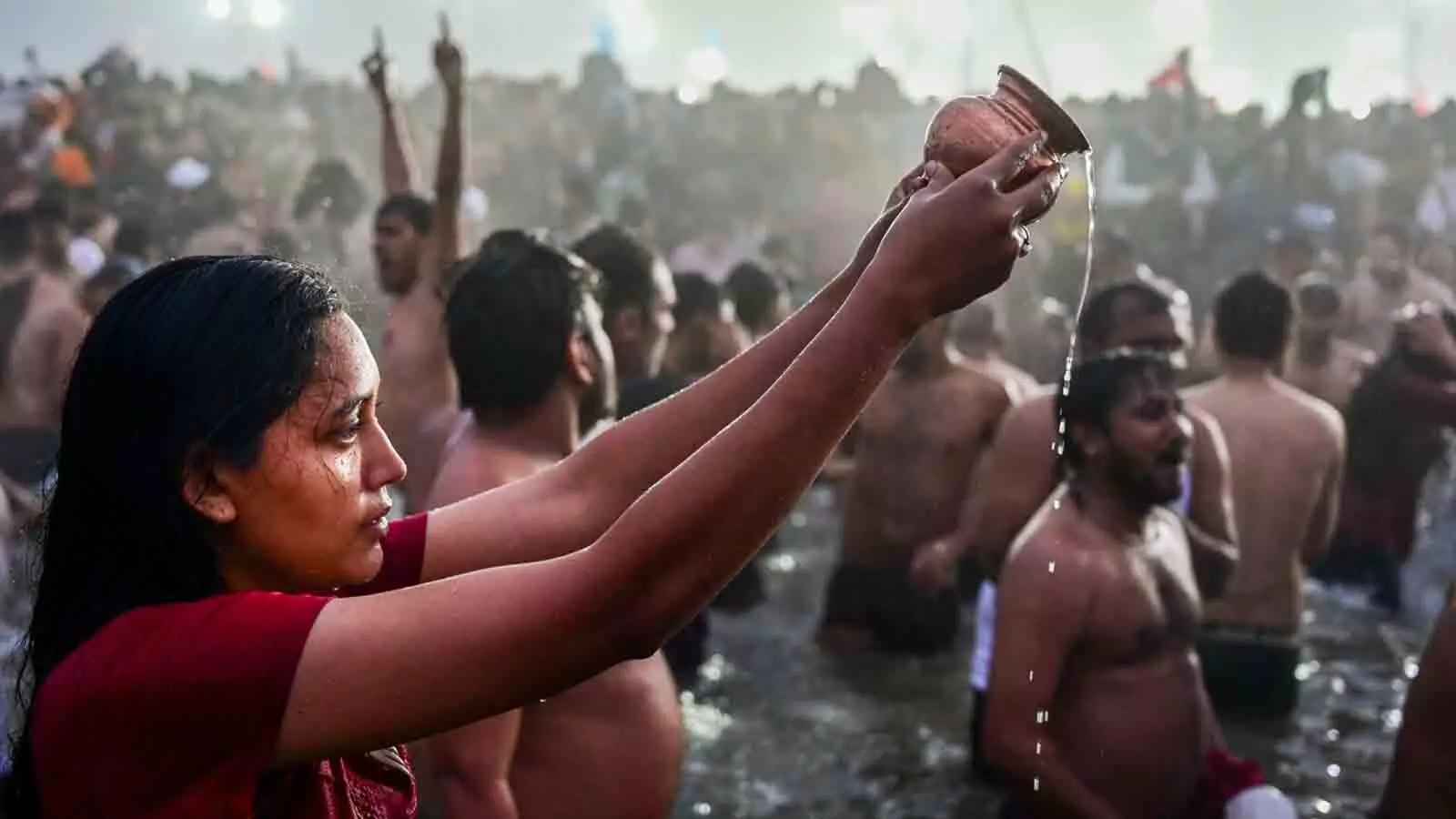
Kumbh Mela 2025: Pilgrims still get lost but they are also easily found
Technology and an army of volunteers and police track down people who get lost in a sea of crowd

Nobody really gets lost anymore in the Kumbh Mela, the world's largest religious congregation held every 12 years in Prayagraj in Uttar Pradesh.
They may get separated from their dear and near ones in the sea of humanity for a while but there is enough support today at this world-famous Kumbh Mela for lost people to reunite with their families.
Though Hindi cinema had milked the ‘kumbh me bichde hue’ ( got separated at the Kumbh mela) plot, who then only reunite with their families as an adult, in real life this scenario no longer plays out. It seems that it’s no longer easy to get ‘completely’ lost in a digital-driven world. This lost and found drama is now just limited to celluloid.
Also read: Maha Kumbh Mela begins, nearly 60 lakh people take holy dip at Sangam
Help at hand
In 2025, the situation, it seems, is very different. According to news reports, though thousands of people still get swallowed by the massive crowds, there is an army of volunteers flanked by the local administration and the police, who swing into action to track down the families of the lost souls. Technology too is helping in a big way to reunite children, women and the elderly who manage to stray from their families.
In fact, 250 people got lost and were united with their families on the first day of Kumbh Mela this year. So, what are the measures taken by the UP administration and NGOs to help people who get lost in the Kumbh Mela?
Lost and Found camps
The Prayagraj Mela Authority has set up a total of 10 digital ‘Lost & Found' camps. These camps are equipped with hi-tech digital tools and 55-inch LED screens connected to a public address system constantly displaying live updates about lost and found persons and items.
Information is also being shared via Facebook, X and WhatsApp to widen the reach and locate missing persons and lost items. These digital centres help to locate missing children and even mobile phones, purses and other belongings. This 'Khoya-Paya' centres have been leveraging technology, including social media platforms, to locate individuals who get separated from their families or friends.
These centres have dedicated sections for lost women and children.
Photos from Maha Kumbh Mela 2025 in Prayagraj
Bhule Bhatke Shivir stalls
Besides these camps, there are volunteers who man the well-known Bhule Bhatke Shivir stalls, which has been around for the past 79 years. Now, they also have technology to assist them to reunite families. This private NGO is now maintaining the records of lost and found persons both manually and digitally.
Set up in 1946 on the banks of the ganga, the shivir organisers claimed to have reunited over 15.22 lakh people so far.
UP police has also set up assistance centres and have deployed their personnel at specially constructed watchtowers.
One volunteer at the Bhule Bhatke Shivir stall told The Times of India that about 200-300 people are separated from their families at the mela even today. But nobody ever gets lost, never to be found, because their families eventually find them.
Sometimes it may take a few hours to a day or even a week to reunite lost individuals with their families, said the report. Hundreds of volunteers are also running around the meal, locating the families of lost ones.
Lost children
Earlier, young children got lost forever because traffickers used to claim them. But now the lost and found centre is very careful about who they hand over lost children to.
There is a lot of checking and verification done before a child is handed over. A photograph of the person is taken before handing over the child to them.
The volunteers wait patiently for a family to come and claim the lost person.
Technology to the rescue
Meanwhile, the reports also pointed out that technology plays a key role in locating missing persons.
Across the 32 sq km expanse of the Kumbh Mela a dozen camps have popped up to cater to those who have managed to get lost. Due to technology, the lost and found centres record the details of each single case. The police has also studied the sensitive areas where people get lost and have posted personnel at those places.
Besides the camps, to solve this perennial problem of pilgrims getting lost and separated, each one will be given a radio frequency wristband to help locate those who go missing.
Devotees are also using glow-in-the-dark accessories and activated Google location to designate a specific landmark as a meeting point and personalized name tags with addresses.
People have come up with unique ways to ensure that their near and dear ones are not lost amidst the sea of humanity.Two sisters from Jharkhand, Gita and Lalita, have tied their hands together with a red ribbon. Some wear a Kumbh lanyard with a QR code.
The Maha Kumbh - festival of festivals
The Maha Kumbh Mela, being held after 12 years, expects a footfall of 40 crore to 45 crore visitors till February 26, according to government estimates.
Known as the 'festival of festivals” in the Hindu religious calendar in India, it is attended by a vibrant mix of sadhus or holy men, ascetics, pilgrims and tourists.
This year’s celebration is particularly significant as the Maha or grand Kumbh Mela only takes place every 144 years, marking the 12th Kumbh Mela and a special celestial alignment of the sun, moon, and Jupiter.
On the opening day of the 45-day festival, approximately 60 lakh devotees took a sacred dip at the Sangam, where the Ganga, Yamuna, and the mythical Saraswati rivers converge, which makes it a holy spot to engage in a spiritual cleansing ritual.

